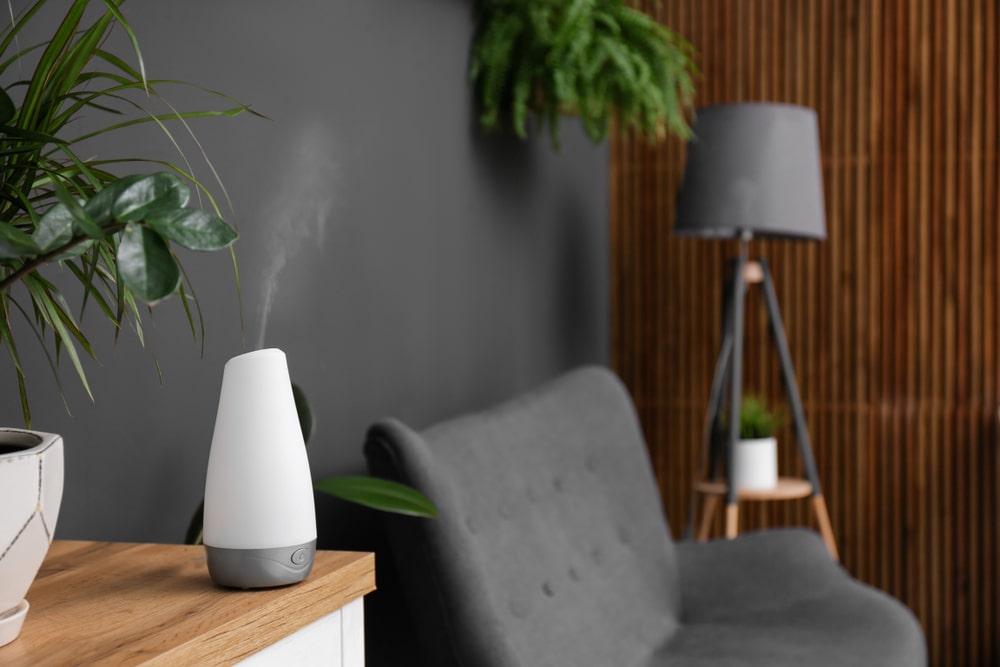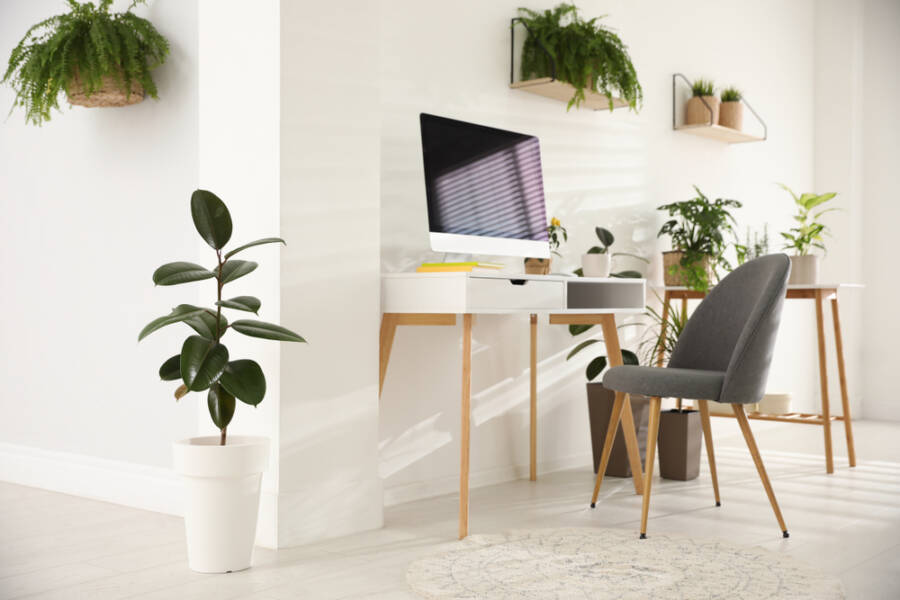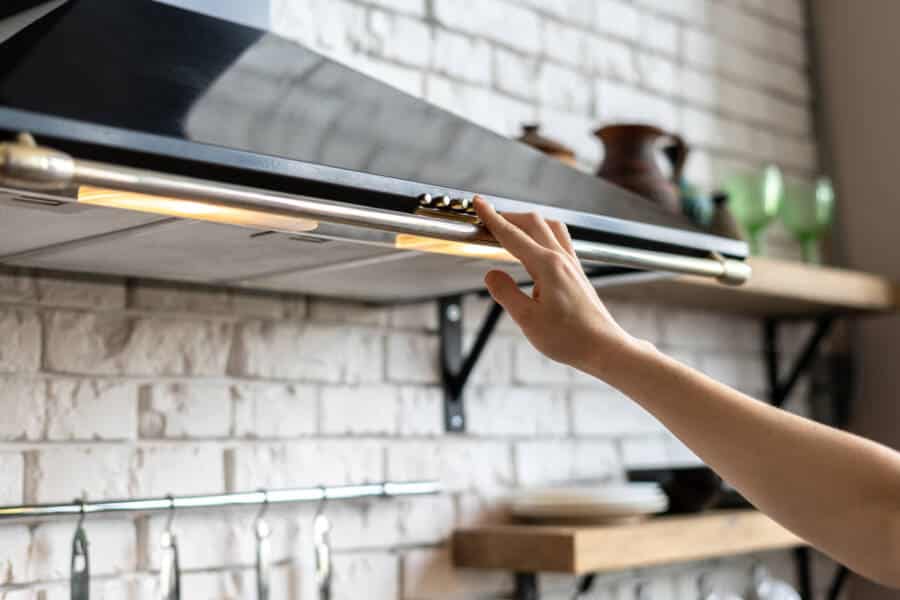The Arrowhead Plant, also known as the Syngonium or Nephthytis, is a beautiful and popular indoor plant known for its arrow-shaped leaves. It is originally from the tropical rainforests of Central and South America, where it grows as a vine.
Just like any other plant, however, it is important to provide the right conditions for it to thrive; one factor to consider being sunlight.
In this article we will explore whether Arrowhead Plants need sunlight, and if so, how much sunlight they need and how to provide it.
By understanding the needs of your arrowhead plant, you can ensure that it stays healthy for years to come!
Does Arrowhead Plant Need Sunlight?
If you want your arrowhead plant to thrive, give it plenty of bright, indirect sunlight and keep it out of direct sunlight. It’s best to keep it in a spot where it will get several hours of filtered sunlight each day.
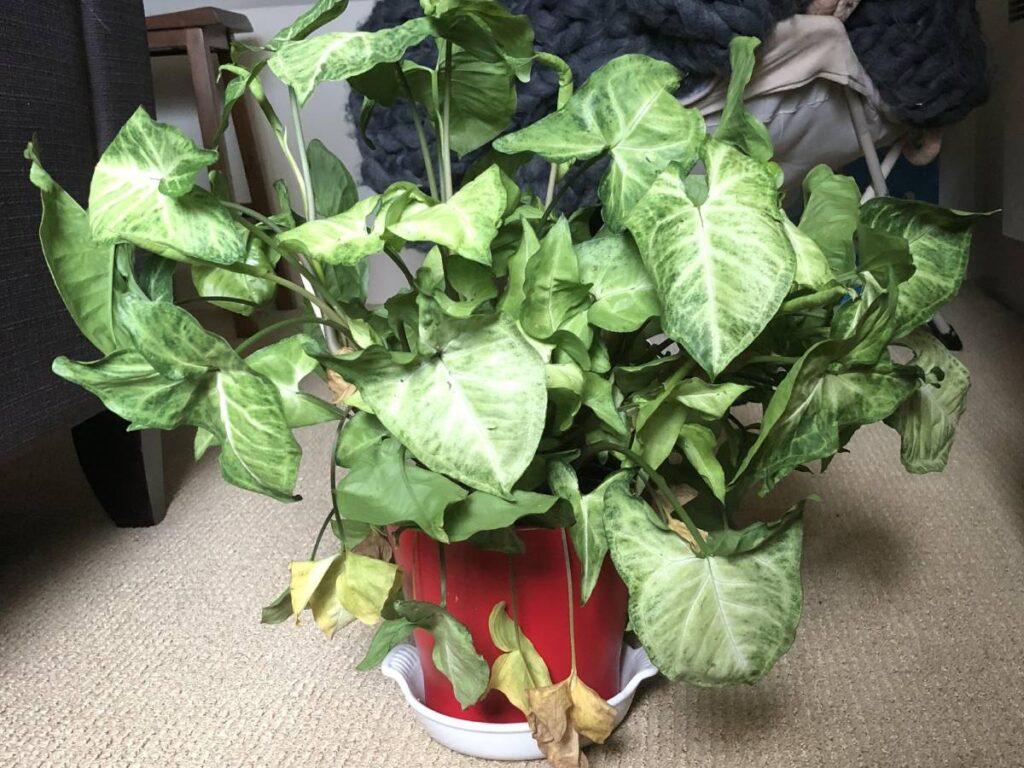
What Are the Needs of Arrowhead Plant with Regard to Sunlight?
The sunlight needs of arrowhead plants may vary depending on the specific cultivar and the growing conditions in your home, including the best lighting conditions and how to identify if your plant is getting too much or too little light.
Sunlight Requirements of Arrowhead Plant
Arrowhead plants need sunlight to grow and thrive. Here’s what you need to know about the sunlight requirements for an arrowhead plant:
– Moderate or filtered light is ideal; stronger light can be filtered by a tree outside or curtains for indoor arrowhead cultivation.
– Give your plant at least 8 hours of bright indirect sunlight every day.
– Place it in the brightest location of your house for maximum effect.
– If natural lighting is inadequate, use artificial lights to supplement its needs. Artificial lights that emit wavelengths between 5000K – 6500K will help imitate full sun exposure and help your natural forms reproduce successfully.
Blue light found in natural daylight encourages healthy growth and prevents leggy or stretched-out growth.
The good news is that fluorescent lights produce blue wavelengths of light that can mimic natural daylight and help the arrowhead plant thrive!
If you follow these tips, you’ll have a thriving arrowhead plant in no time!
What Are the Benefits of Providing Sunlight to an Arrowhead Plant?
Arrowhead Plants adapt to low-light conditions and can tolerate a range of light levels. However, providing the plant with enough sunlight is important for healthy growth and development.
One benefit of providing sunlight to an arrowhead plant is improved growth and the development of healthy foliage.
The plant needs light in order to photosynthesize and produce energy, which is necessary for its growth and development. By providing it with sufficient sunlight, you can help it grow more effectively and produce new leaves.
Another benefit of providing the plant with enough sunlight is a reduced risk of scorching or discoloration of its leaves due to direct light exposure.
When the sun isn’t as strong in the winter, in the early morning or late afternoon, the arrowhead plant can handle direct sunlight. However, avoiding direct sunlight is best to keep it from getting hurt.
Overall, providing your arrowhead plants with moderate or filtered indirect sunlight provides optimal conditions for their growth and health while avoiding any potential damage from direct sun exposure. This will allow them to thrive over time!
Can Arrowhead Plants Survive in Low Light?
When it comes to the question of whether arrowhead plants can survive in low-light conditions or not, the answer is a definite “sort of.” While an arrowhead plant might manage to stay alive in low-light environments for some time, eventually it will need proper light.
That’s because in order for plants to photosynthesize and produce energy, they need light; no light means no energy production and therefore no functioning plant.
The exact amount of light that a particular species needs will vary depending on its variety – for example, variegated varieties typically need more light than greener ones.
You should consider moving your arrowhead plant from a low-light spot back to a brighter location if it has been there for 1-2 weeks or more; however, if you want to keep it in a low-light area during that time period, then you should consider investing in artificial lighting such as grow lights.
Low Light Conditions for Arrowhead Plant
The arrowhead plant is capable of surviving and even thriving in lower light conditions. It’s native to the tropical rain forests of Central and South America, so it’s accustomed to growing underneath the canopies of taller trees and receiving only dappled sunlight. As a result, it can tolerate low-light conditions.
However, moderate to bright indirect light is preferred. While it may not grow as vigorously or produce as many leaves in low light levels, with proper care it still has the potential to thrive. It’s best kept in temperatures between 60-80°F (15-27°C) and away from freezing temperatures.
Overall, while the arrowhead Plant doesn’t need tons of direct sunlight, it still prefers moderate indirect light for best results.
Factors to Consider When Growing the Arrowhead Plant in Low Light
When growing the arrowhead plant in low light, there are a few additional factors to consider to ensure its health and success. The plant prefers high humidity, so if the air in your home is dry, it can be helpful to mist the leaves or place the plant on a humidity tray.
Temperature is another factor to consider when growing the arrowhead plant in low light. The plant prefers temperatures between 60 and 80 degrees Fahrenheit and can tolerate a wide range of temperatures as long as it isn’t exposed to extreme heat or cold.
Watering is also an important factor to consider when growing the arrowhead plant in low light. Maintain a consistent watering schedule and do not let the soil dry out completely, as this can cause the plant to become stressed. Check the soil moisture level regularly and water as needed.
Overall, paying attention to these key factors will help ensure that your arrowhead plants thrive in low-light conditions. With proper care and adjustments as needed, you can help your plants reach their full potential even under these challenging conditions.
Tips for Growing the Arrowhead Plant in Low Light
Here are some tips for helping your arrowhead plant flourish in low-light environments:
Place the Plant Near a Window That Gets Indirect Sunlight: The arrowhead plant prefers moderate to bright indirect sunlight, and placing it near a window that gets indirect sunlight can help it receive the light it needs. If you don’t have access to natural light, you can also use artificial lighting to supplement what the plant receives.
Increase Humidity: In addition to needing sunlight, the arrowhead plant also needs high humidity levels to remain healthy. It’s important not to let the air become too dry, as this could cause stress to the leaves and prevent them from growing properly. You can increase humidity by misting the leaves or putting your potted arrowhead on a humidity tray.
Keep the Soil Evenly Moist: While the arrowhead plant does not like consistently wet soil, it is important that you regularly check soil moisture levels and water when necessary. Allowing the soil to completely dry out will stress your plant and cause long-term damage.
Fertilize Regularly: To ensure optimal health and growth of your arrowhead plants in low-light conditions, be sure to use a balanced liquid fertilizer regularly as instructed by its packaging instructions based on age.
Ensure that there is enough water and nutrients available for the plant when it is situated in low light conditions, as these plants tend to be more sensitive when it comes to these factors under lower lighting levels than they would be under brighter lighting conditions
For example, if you have an arrowhead plant variegated variety and want to keep it indoors with low light levels then use artificial lights such as grow lights or place it near windows that receive plenty of sunlight during daytime hours
Do Arrowhead Plants Like Direct Sunlight?
Arrowhead plants typically don’t like direct sunlight and can be sensitive to it. They’re native to the tropical rainforests of Central and South America, where they usually get dappled sunlight. However, they’re adapted to low-light conditions and can tolerate a range of light levels.
That being said, you should avoid placing the plant in direct sunlight, as this can cause the leaves to become scorched or discolored over time. It’s best to provide the arrowhead plant with indirect or filtered light instead, as this will help it grow best.
You can place the plant near a window that gets indirect sunlight or use artificial lighting to supplement the light it receives.
What are the Signs that an Arrowhead Plant Is Not Getting Enough sunlight?
If an arrowhead plant is not getting enough sunlight, it may display the following signs:
Yellow leaves: The leaves may turn yellow due to lack of sunlight.
Dry leaves: If there isn’t enough moisture in the soil, the leaves will become dry and fall off.
Brown, crispy spots on leaves could mean sunburn, which can cause drying and damage to the entire leaf surface.
Dry soil: Lack of moisture in the soil makes it difficult for plants to thrive in any environment.
Can an Arrowhead Plant Be Moved to a Location With More Sunlight?
Looking to move your arrowhead plant to a spot with more sunlight? You can absolutely do that, provided you take it slow and follow the correct steps.
First, you’ll need to gradually increase the amount of sunlight so that the plant has time to adjust accordingly. It’s essential not to put it in direct sun, as this can cause damage to the leaves. Instead, look for a location with bright, indirect light.
Once the arrowhead plant is situated in its new spot, it’s important to check on it regularly and monitor its response. If you notice wilting or yellowing foliage, return it to its original location or find one with less intense light exposure.
Overall, your arrowhead plant is adaptable enough that moving it around will likely not harm it if done right. Just remember to take your time and abide by these tips, and your plant should be just fine!
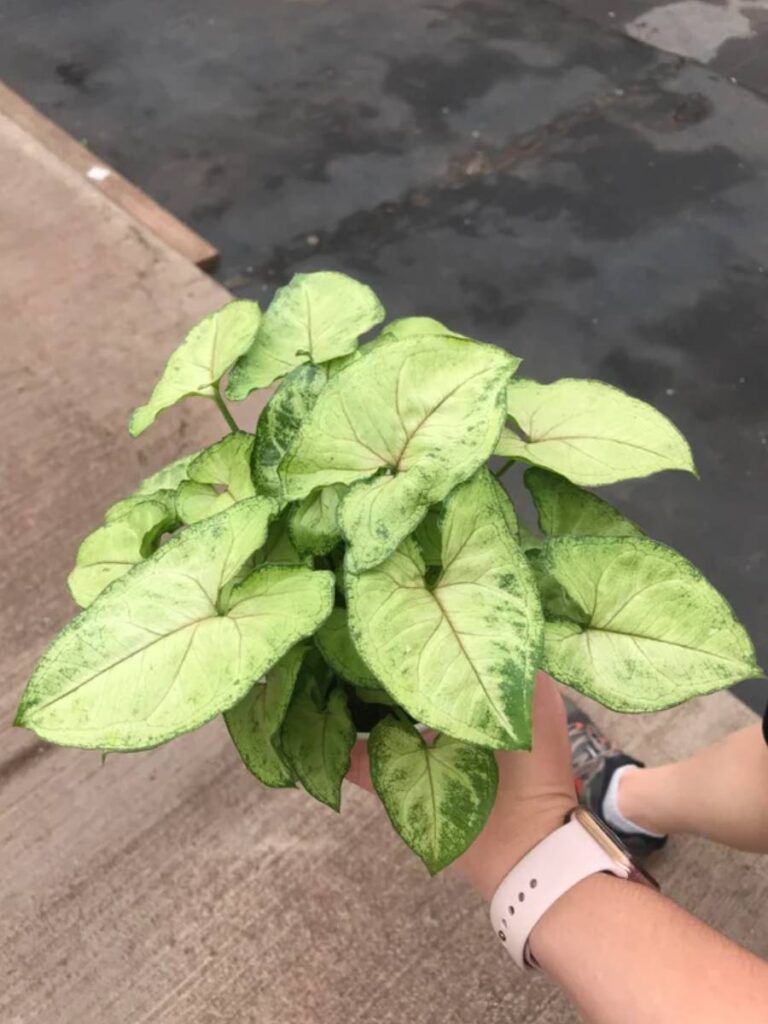
How Can I Tell If My Arrowhead Plant Is Getting Too Much Sunlight?
1. Check the leaves of your arrowhead plant for signs of too much direct sunlight, such as yellowing leaves, crispy spots on leaves, and browning leaf margins.
2. If you notice any of these symptoms in your plant’s leaves, move it away from the window or source of direct sunlight immediately to prevent further damage to its foliage.
3. Cut off any damaged leaves at their base with a neat and sterile blade, then discard them in the garbage (do not add them to compost).
4. Protect your arrowhead plant from further exposure to direct sunlight using a filter if necessary; this will help it recover faster when moved back into its original position after being exposed to too much light intensity or sunburn damage has been repaired on its foliage parts..
For example: If you’ve accidentally left your arrowhead out in the sun or placed it on the windowsill of a south-facing window without realizing that there was intense sunlight exposure there as well then you may notice yellowing leaves or even crispy scorched ones soon enough – which means that it’s time for action! Move it away from that spot immediately before more serious damage is done!
Can Indirect Sunlight Be Sufficient for an Arrowhead Plant?
The short answer is yes. An arrowhead plant is a robust species and can do well in low light conditions, making it great for the indoor setting!
However, you should keep in mind this type of plant loves bright but indirect sunlight. Place it close to a window that gets lots of natural daylight or near artificial lighting.
Its leaves will most likely start turning yellow if left in direct sunlight for too long. To avoid this issue, make sure not to leave it in the sun for more than three hours a day. Providing it with adequate filtered light should be enough for your pretty little arrowhead plant’s needs!
What Are Some Tips for Providing the Right Amount of Sunlight for an Arrowhead Plant?
If you have an arrowhead plant in your home, it’s important to provide it with the right amount of sunlight. To help make sure that your plant receives enough light, here are a few tips:
Choose the right location: When selecting a spot for your arrowhead plant, look for one that offers bright, indirect light. Avoid direct sunlight, which can cause the leaves to wilt or scorch. A south- or east-facing window is usually best.
Rotate the plant regularly: To ensure all parts of the plant receive adequate light and to prevent leaning towards the light source, turn the plant each week so all sides benefit equally from the light.
Use a grow light if needed: If natural lighting isn’t available, you may need to use a grow light. Always be sure to follow manufacturer’s instructions when using these lights.
Monitor the plant response: Observe how your arrowhead plant responds to its environment and adjust accordingly if there is any yellowing or wilting of leaves due to a lack of adequate lighting.
By following these simple tips, you can help make sure that your arrowhead plant has everything it needs to thrive!
Final Thoughts
In conclusion, arrowhead plants need bright, indirect sunlight to thrive. Direct sunlight can cause the leaves to wilt or scorch, so it is important to provide the plant with filtered light and rotate it regularly. If natural lighting isn’t available, a grow light may be necessary. Monitor the plant’s response to its environment and adjust accordingly if there is any yellowing or wilting of leaves due to lack of adequate lighting. With proper care and attention, your arrowhead plant will flourish!



